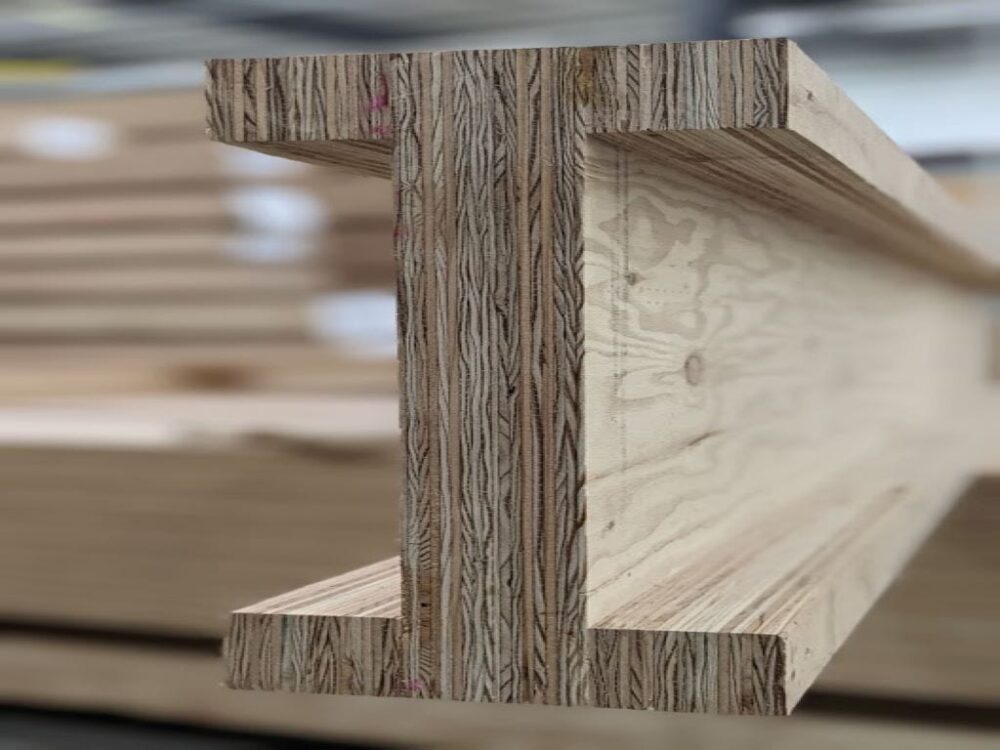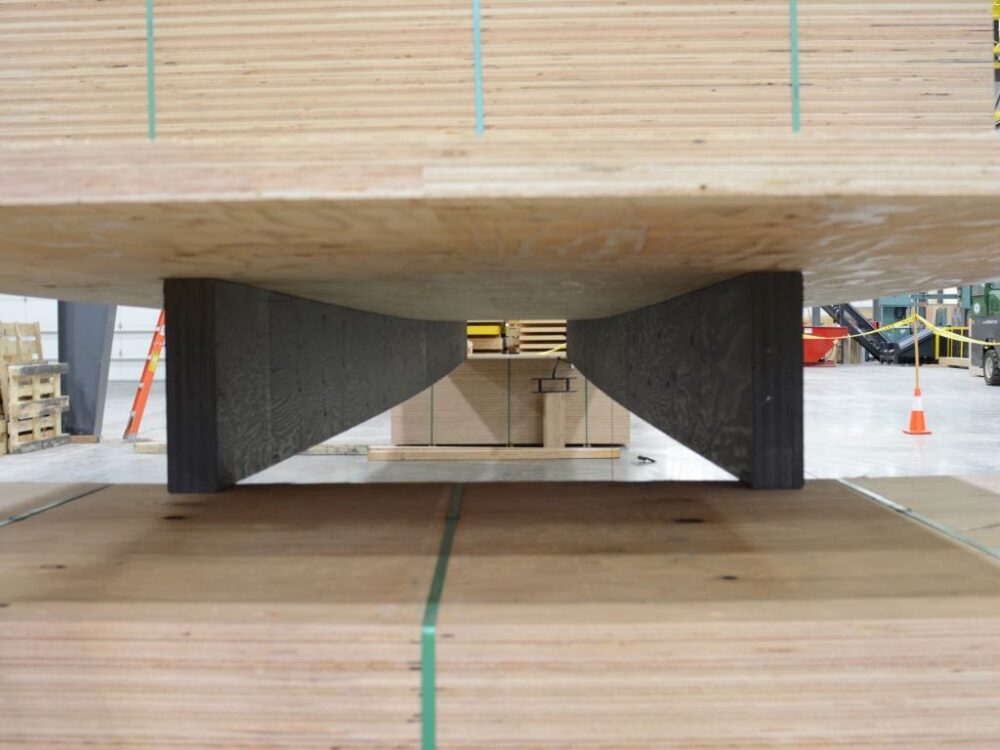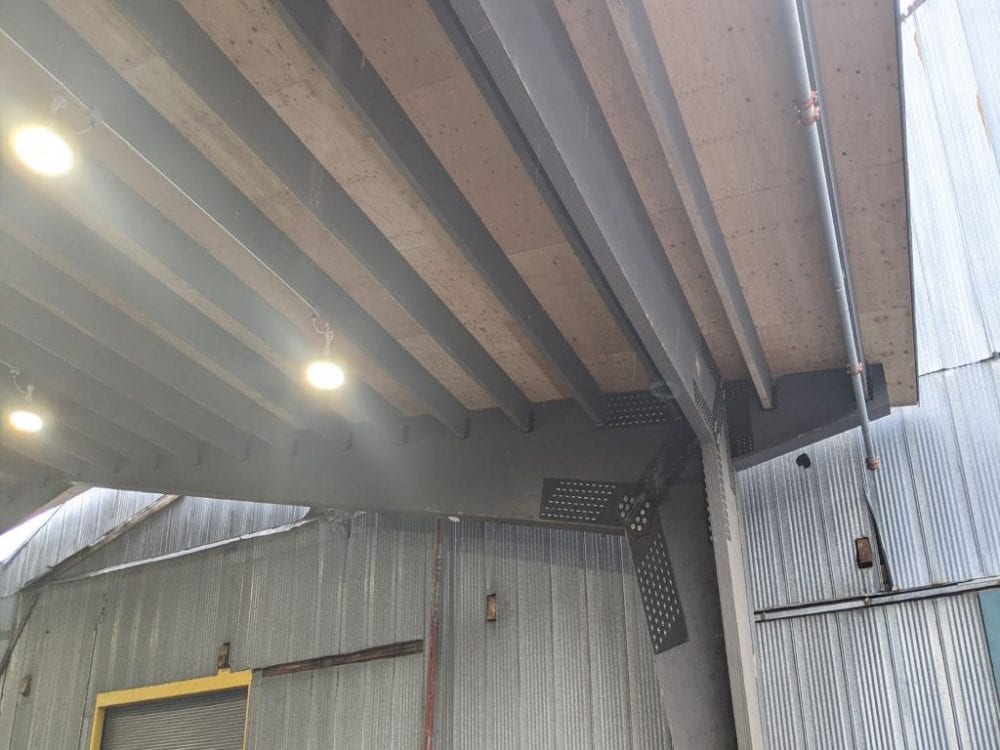What is a Double-T Beam?
Maybe you have seen these types of beams before. “I-shapes,” “box sections,” and many other wild shapes that are better versions of the square beam. Have you ever wondered why we make these shapes? What makes them better than a regular piece of lumber? Today we will look at the science behind these crazy shapes and why they are useful for design.

Figure: “I-Shape” made from Mass Ply Panels
For beams, remember one key idea: material further from the middle of a beam does more work for less effort. This key idea is why I-shapes have more material on the top and bottom rather than the middle. An I-shape puts the most material where it can be most useful.

Figure: “Double-T” beam made from Mass Ply
Shapes like the I-shape or “Double-T” shape above are tough to find in nature. To overcome this, engineers use “composite sections” to create these shapes. By connecting smaller pieces together into complex shapes, the efficient behavior of an I-shape can be made with a few small rectangles. The Double-T shape above uses the same idea. The added stems on the thin panel (the bottom of the T) move material away from the center of the panel making a much stiffer beam.
How does a composite beam work?
So far, I have said that material further from the middle of the beam is more efficient at doing its job. But how can this be true for a composite beam? Can you just stack 2×4’s on top of each other and get a stiffer beam? Not quite. If you are unable to cut an I-shape from a square beam, then when you build one, you must make sure the pieces are well connected. Connections are the key with composite beams.
There are many ways to connect your composite beams “well.” Anything from screws, glues, to nails can be used to connect parts of a composite beam. If you are creating friction between layers, a beam can become composite. Let us look at an example; anyone can do this test at home. Take a book and hang it over the edge of a table.

Figure: Composite Book with friction (top)
and Composite Wood Panel with glue (bottom)
Notice how far the book bends? Now take a grip and clamp the pages shut. Even with the extra weight of the grip, the book will bend quite a bit less! The reduced bending comes from the added friction, allowing the pages to behave as one book, instead of many thin pages.
This idea is what allows companies to make products like plywood. In the figure above, notice how the glue between layers keeps the wood from sliding apart, even with thousands of pounds of force on the piece. The glue is so strong it tears the wood apart as the load forces the layers to slide.
Why make a composite beam from Mass Ply?
Mass Ply can create massive beams (up to six feet deep). If that is true, then why even bother with composite beams made of Mass Ply? Take the breezeway project below, it would take a large beam to span the entire 40 feet. A beam at least five inches wide and 20 inches deep might work. This size of beam is very possible with Mass Ply.
 Figure: Double-T beams spanning a 40-foot breezeway
Figure: Double-T beams spanning a 40-foot breezeway
Using a Double-T composite beam, the same span could be achieved with a two-inch panel and 15-inch-deep stems underneath that are only three inches wide. Not only is that less material for the same use, but the saved head space allows for more room with plumbing, lighting and loading of trucks.
Composite beams give designers even more options to push the envelope of their design and still make wise choices in conserving material and time on a project. The breezeway project was a great example of how Mass Ply can be used to this end.
Subscribe
We’ll send you a notification when a new story has been posted. It’s the easiest way to stay in the know.
 Figure: Double-T beams spanning a 40-foot breezeway
Figure: Double-T beams spanning a 40-foot breezeway